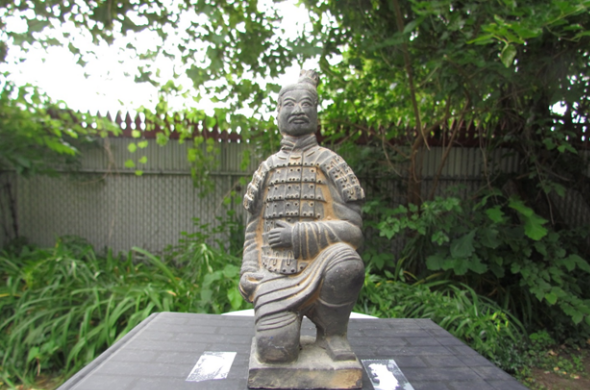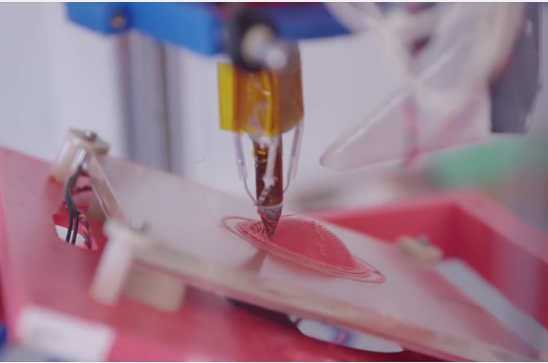Uma Impressora 3D de Resina, com velocidade de Impressão de 3mm por minuto, dá um objecto com 18 Cm de altura, numa hora!
E é claro, com uma qualidade de impressão inigualável pelas Impressoras de Filamento...
Gizmo GiziPro Super Speed
The world’s first continuous print super speed, high quality top down DLP 3D printer: The GiziPro is now on Indiegogo. GiziPro is designed for producing high quality 3D models at an amazing speed up to 3mm/minute! Gizmo GiziPro has received an A rating from iMakr's test report.Utilizing a multiple built-in USB connections and an HDMI connection, the GiziMate can connect directly to your PC. One USB connection is used by Gizmetor to control the printer and the second USB connection can be used for anything the user might require, e.g. adding a web camera to the printer. The HDMI connection is used to display the layers when building 3D models.
Dica da Imaterialise, podem agora transformar uma data de objectos em Ficheiros 3D, com esta técnica simples.
E tudo isto, com Software grátis?
É bom!
How To Make a 3D Model from Photos in 5 Easy Steps
BillyLooking for turning a photo into a 3D model? You can easily create 3D printable objects and 3D models from images and photos nowadays. In this tutorial we will show you how you can turn ordinary 2D pictures of everyday objects into extraordinary 3D models. Turning 2D into 3D has never been easier as this project requires no coding experience and runs 100% on free software. If you think about 3D printing these 3D models, you don’t even have to buy a 3D printer and you can do it all without leaving your house. Let’s get started!
Se estão apertados de Finanças, mas têem MESMO de ter uma Impressora, podem então construír esta Impressora 3D, por só 60€, o que já estará ao alcance, práticamente, de qualquer um...
E feito por um engenhoso Geek de 16 anos de idade, por isso, não me venham com desculpas, façam uma destas!
Cherry- 60€ 3D-Printer
Vulcaman
Hello, in this instruction, I will show you how to make a 3D-Printer for less than 60€ (maybe the cheapest in the world)I'm 16 Years old and I made everything by myself.This 3D-Printer, works with the cheapest motors on the market (28Byj-48), for the electronics I use the Ramps 1.4 . It also has an all metal hotend for around 5€.Specs:Buildsize : 10x10x10cmTravel speed: 20mm/sPrintspeed: 10mm/sResolution: 0.2mm
Do nosso amigo Andrea Biffi vem mais esta ideia, de como podem ter um mini-Engenho, para as vossas Dremmel, para furos como devem de ser furados, sem falhas nem brocas partidas:
Cheap precision drill stand
andrea biffiWhen I begun to etch my custom pcb I felt the need to improve circuit drill tecnique. I drilled my first circuits by free-hand with my Dremel, but despite it's very fast, it's subject to errors, and it's also dangerous, because the drill bit is very narrow and weak.I've searched a column drill as the "Proxxon Bench Drill Press TBM 115" but it's a little too expensive. I've found also a vertical stand for Dremel alt 50€, but it was a model with a single metal column as rail, similar to the most you can see with a "drill stand" search, and it had a low precision in horizontal movement of the bit. In fact you felt the head moving of about a millimeter, which is a lot when your bit is so narrow. So I decided to build it by myself.
E ainda fora do alcance do Público em geral, eis uma Impressora...
5D!
Mas bnão se assustem, que é uma Impressora de Filamento, com um Extrusor normal, mas que pode inclinar a placa de deposição, em 2 eixos, e daí 5D, ou mais exactamente, 5 graus de liberdade, no movimento.
O que isto traz de muito útil, é que esta máquiina imprime não só em camadas planas, mas em camadas CURVAS, o que para além dum sem-fim de usos possíveis, e do fim das "escadinhas", significa sobretudo, Objectos com um grau de resistência muito maior...
Por serem feitos seguindo as Linhas de Força exercida sobre esse Objecto, tal como os Edifícios, que seguem a arquitectura da maior força com o menor Material.
3D Printing is So Last Week...Say Hello to "5D Printing" at Mitsubishi Electric Research Labs!Clare ScottWe all know what 3D printing is – obviously. (If you don’t, here’s a handy overview. Welcome, newcomer.) We’ve also explored 4D printing, which involves printed objects that mutate and morph into different shapes when exposed to an outside stimulus such as light, water or temperature changes. So what’s involved in 5D printing? Printed objects that levitate? Printed objects that teleport? Time-traveling printed objects?!Well…no. You can 3D print a TARDIS, but you still can’t make it travel. 5D printing is simply another name for five-axis additive manufacturing, and while it may not be as exciting as teleportation, it’s still pretty cool – and useful. The term “5D” as applied to five-axis printing is being used by Mitsubishi Electric Research Laboratories (MERL), the North American subsidiary of the multinational corporation’s research and development branch. They’ve been experimenting with a print bed that actually rocks back and forth on two axes, creating a fourth and fifth axis as a result.What this means for the final printed part is that instead of being created as a series of flat layers, the layers are curved. William Yerazunis, Senior Principal Research Scientist at MERL, describes the advantages of this process as applied to a pressure cap. A cap printed using standard 3D technology will be quickly ripped apart along the adhesion lines when pressure is applied, he explains. But if that same part is printed with the 5D method, curving the lines where the maximum stress will be applied, the part will be three to five times stronger – and will use 25% less material.






Sem comentários:
Enviar um comentário